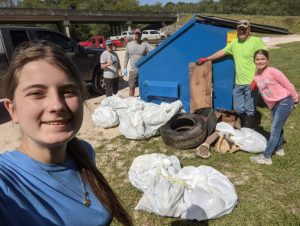
Satilla Riverkeeper, headquartered in Waycross, GA, was founded in 2004 to protect, restore and educate its community about the Satilla River Watershed, which drains 4,000 square miles of upper and lower coastal plains, a blackwater stream consisting of tannins and other natural leachates. The organization serves as the ecological link between the systems whose headwaters are the Okefenokee Swamp, to the south and west, the Altamaha system to the north, and the estuaries of Georgia’s Golden Isles to the east. The Satilla Watershed’s biggest threats are from development and industrial stormwater pollution, particularly from industry in low-income, majority Black communities in Brunswick, Waycross, and Douglas.The group’s mission is to patrol the river, do water quality testing, monitor pollution permits, run a citizen hotline, advocate for new laws, and take legal action when needed.

Chris Bertrand, Satilla Riverkeeper and Executive Director – During law school at the University of Georgia, he interned with Georgia Sea Grant, the Chattahoochee Riverkeeper, the Southern Environmental Law Center, and EPA Region 4.
A member of the Waterkeeper Alliance and the Georgia Water Coalition,The Satilla Riverkeeper is a 501(c)(3) nonprofit, dedicated to being the “eyes and ears” of the watershed. Spanning 15 rural and low-income counties in southeastern GA, the area features old-growth forests, bald cypress stands, and vital habitats for rare species. In order to serve both the human and natural communities that rely on the Satilla River, The Riverkeeper acts as a source of scientific knowledge, environmental advice, and education. They assess and document non-point source pollution, monitor for violations of environmental law and engage in citizen stewardship. Supported by volunteers, interns, and staff, and in collaboration with Chattahoochee and Altamaha Riverkeepers, they strive to maintain the Satilla River’s unique ecology and beauty for all.

Hannah and Earth Inspired Kids leading a trash cleanup at the 121 Landing on the Satilla River